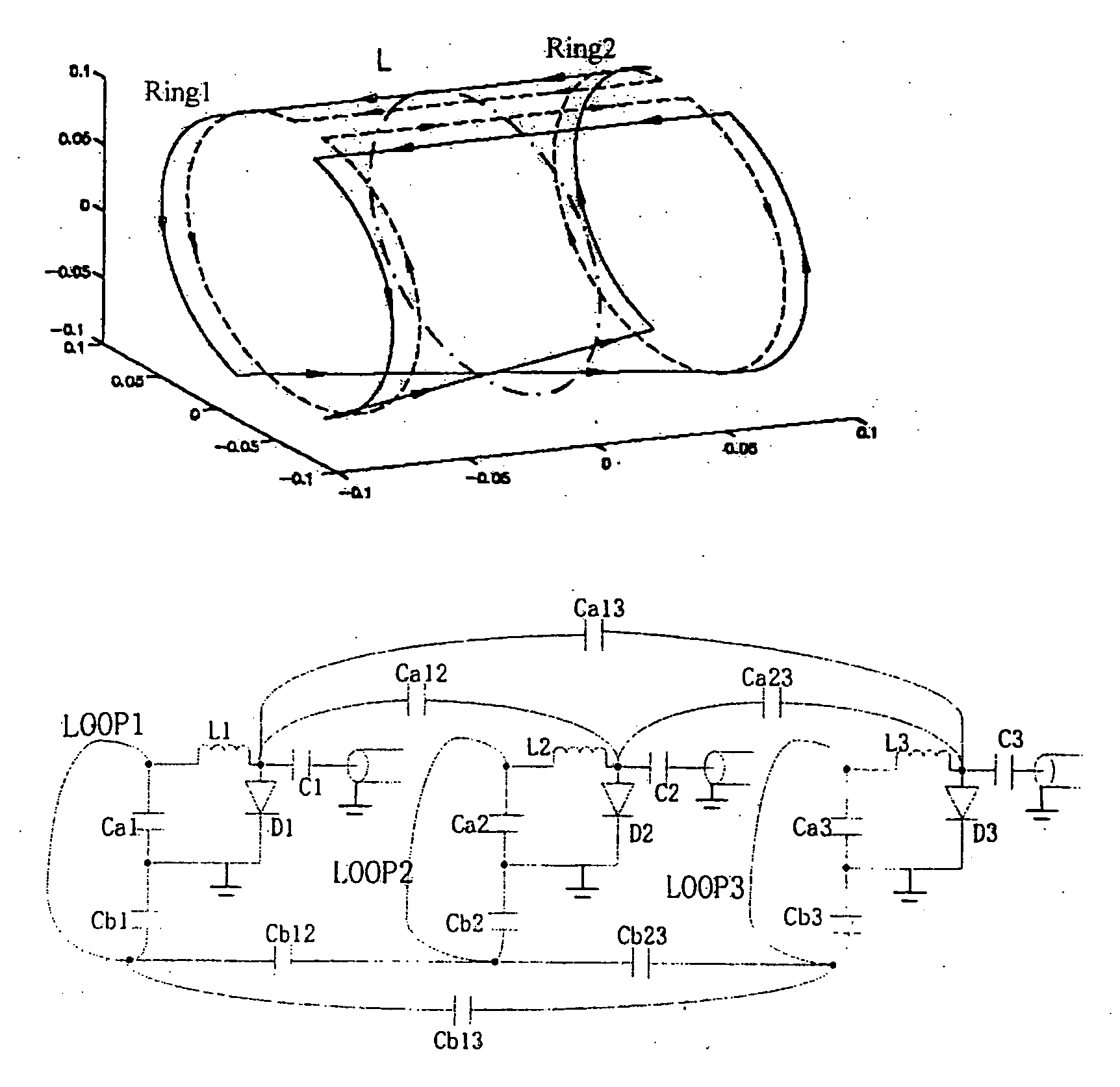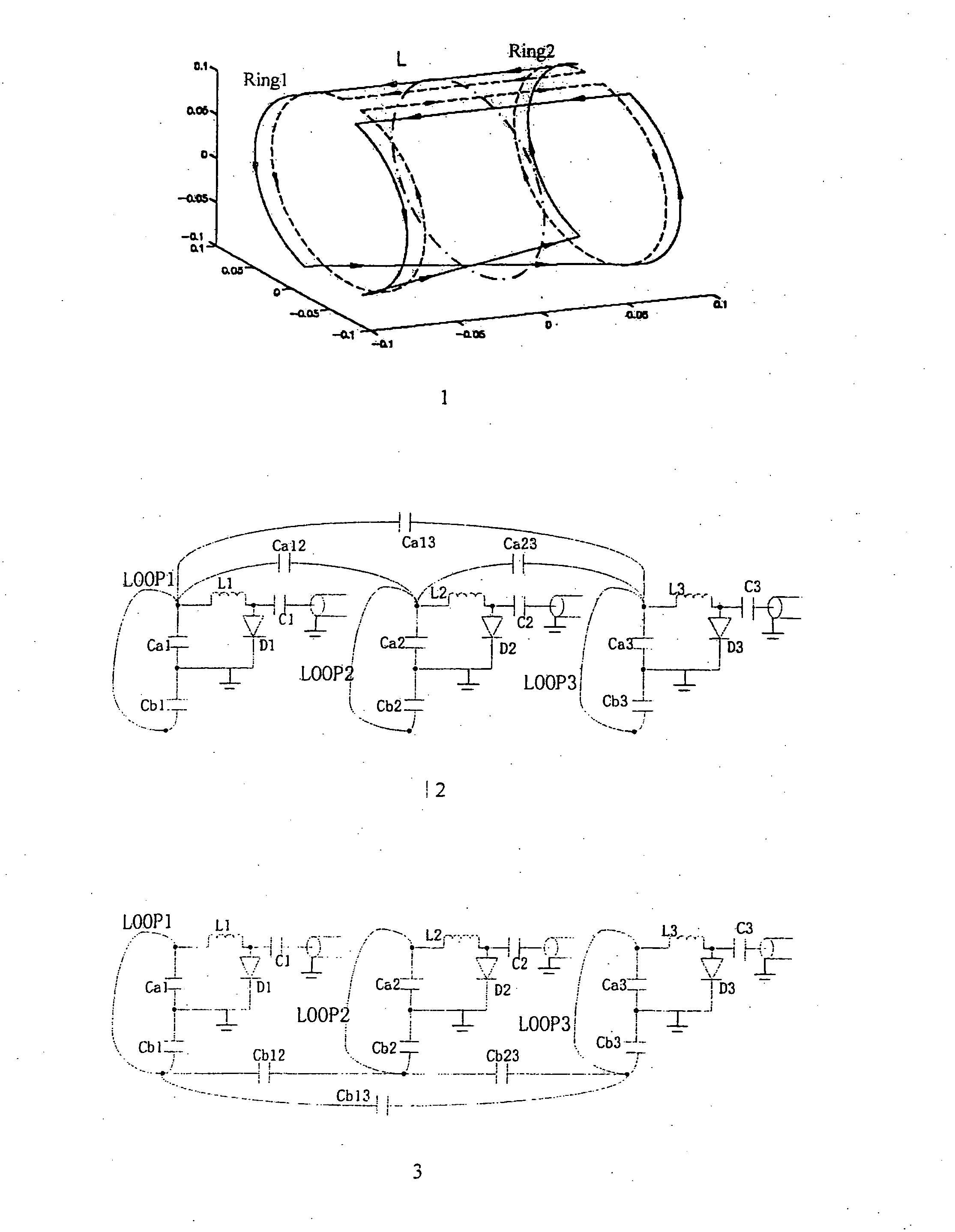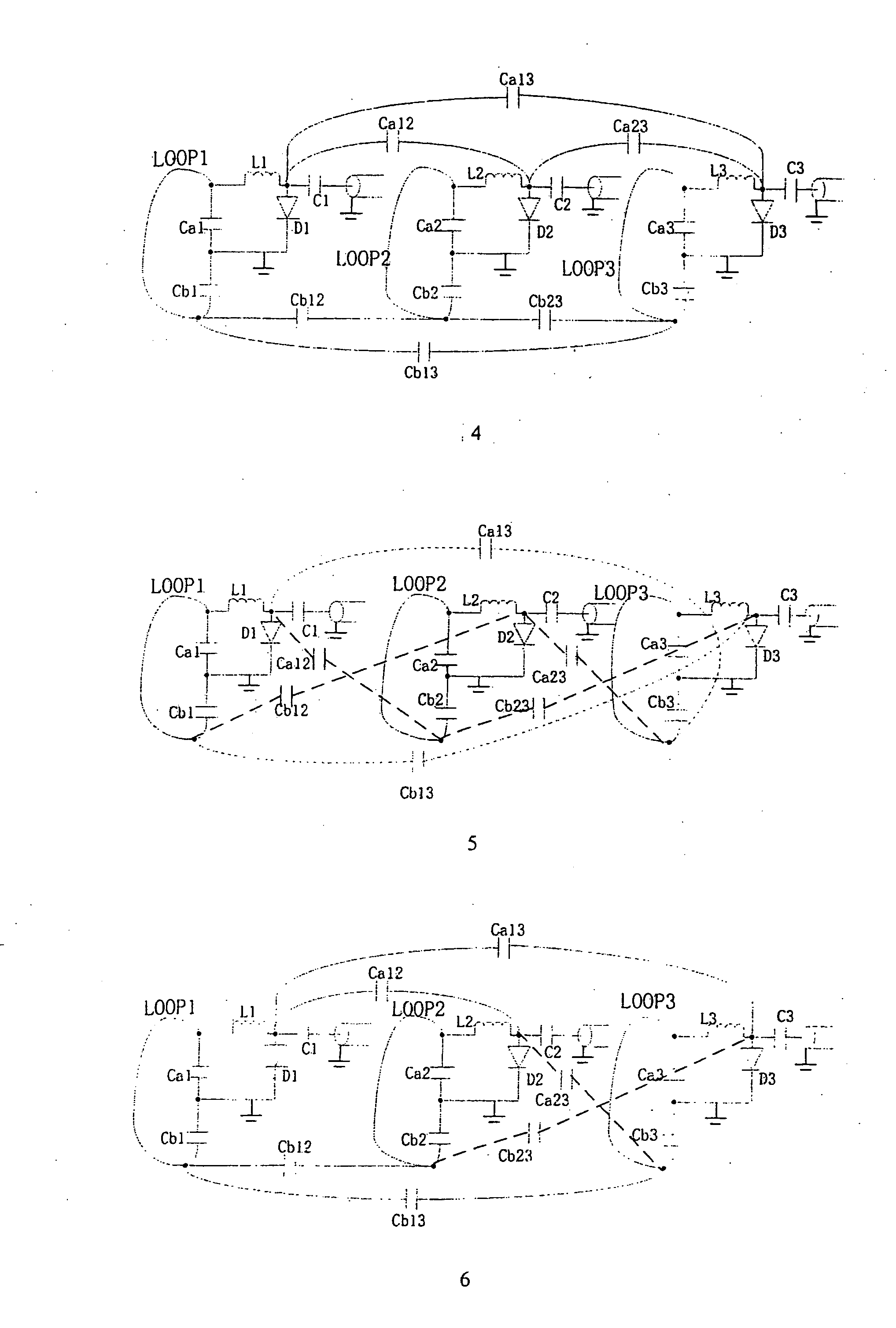Receiver coil array for a magnetic resonance imaging system
a magnetic resonance imaging and receiver coil technology, applied in the field of receiver coil array for magnetic resonance imaging (mri) system, can solve the problems of reducing the life span of the receiver coil, noise and affecting the received signal, and coupling is a type of interference in the circuit, so as to increase the voltage of the mri system and not increase the loss of the circui
- Summary
- Abstract
- Description
- Claims
- Application Information
AI Technical Summary
Benefits of technology
Problems solved by technology
Method used
Image
Examples
first embodiment
[0033]FIG. 4 shows the receiver coil array for a magnetic resonance receiving system in accordance with the present invention. The receiver coil array as shown has: three receiver coil circuits LOOP1, LOOP2, LOOP3 for receiving the magnetic resonance signals emitted from a human body, each of which, e.g. LOOP1, has a tuning circuit (Ca1, Cb1, L1), a detuning circuit (Ca1, L1, D1) and a matching circuit (Ca1, Cb1, L1, C1). The receiver coil array has a decoupling circuit in which a pair of decoupling capacitors are connected between each and every two of the receiver coil circuits for countering the coupling between the receiver coils. The decoupling circuit has two decoupling capacitors Ca12, Cb12 connected between the receiver coil circuits LOOP1 and LOOP2, two decoupling capacitors Ca23, Cb23 connected between the receiver coil circuits LOOP2 and LOOP3, and two decoupling capacitors Ca13, Cb13 connected between the receiver coil circuits LOOP1 and LOOP3. The decoupling capacitor C...
third embodiment
[0042]FIG. 6 shows an receiver coil array for a magnetic resonance receiving system in accordance with the present invention. In this embodiment, there are three pairs of decoupling capacitors between the three receiver coil circuits LOOP1, LOOP2, LOOP3, wherein the decoupling capacitors between LOOP1 and LOOP2 are Ca12 and Cb12, the decoupling capacitors between LOOP2 and LOOP3 are Ca23 and Cb23, and the decoupling capacitors between LOOP1 and LOOP3 are Ca13 and Cb13.
[0043] Parallel decoupling is used between LOOP1 and LOOP2, and the decoupling capacitor Ca12 has its both ends grounded respectively through the diodes D1, D2 in the detuning circuit of LOOP1, LOOP2, the decoupling capacitor Cb12 has its both ends grounded respectively through the tuning capacitors Cb1, Cb2 of LOOP1, LOOP2. Cross decoupling is used between LOOP2 and LOOP3, the decoupling capacitor Ca23 has one end grounded through the diode D2 in the detuning circuit of LOOP2, and the other end grounded through the tu...
PUM
 Login to View More
Login to View More Abstract
Description
Claims
Application Information
 Login to View More
Login to View More - R&D
- Intellectual Property
- Life Sciences
- Materials
- Tech Scout
- Unparalleled Data Quality
- Higher Quality Content
- 60% Fewer Hallucinations
Browse by: Latest US Patents, China's latest patents, Technical Efficacy Thesaurus, Application Domain, Technology Topic, Popular Technical Reports.
© 2025 PatSnap. All rights reserved.Legal|Privacy policy|Modern Slavery Act Transparency Statement|Sitemap|About US| Contact US: help@patsnap.com



